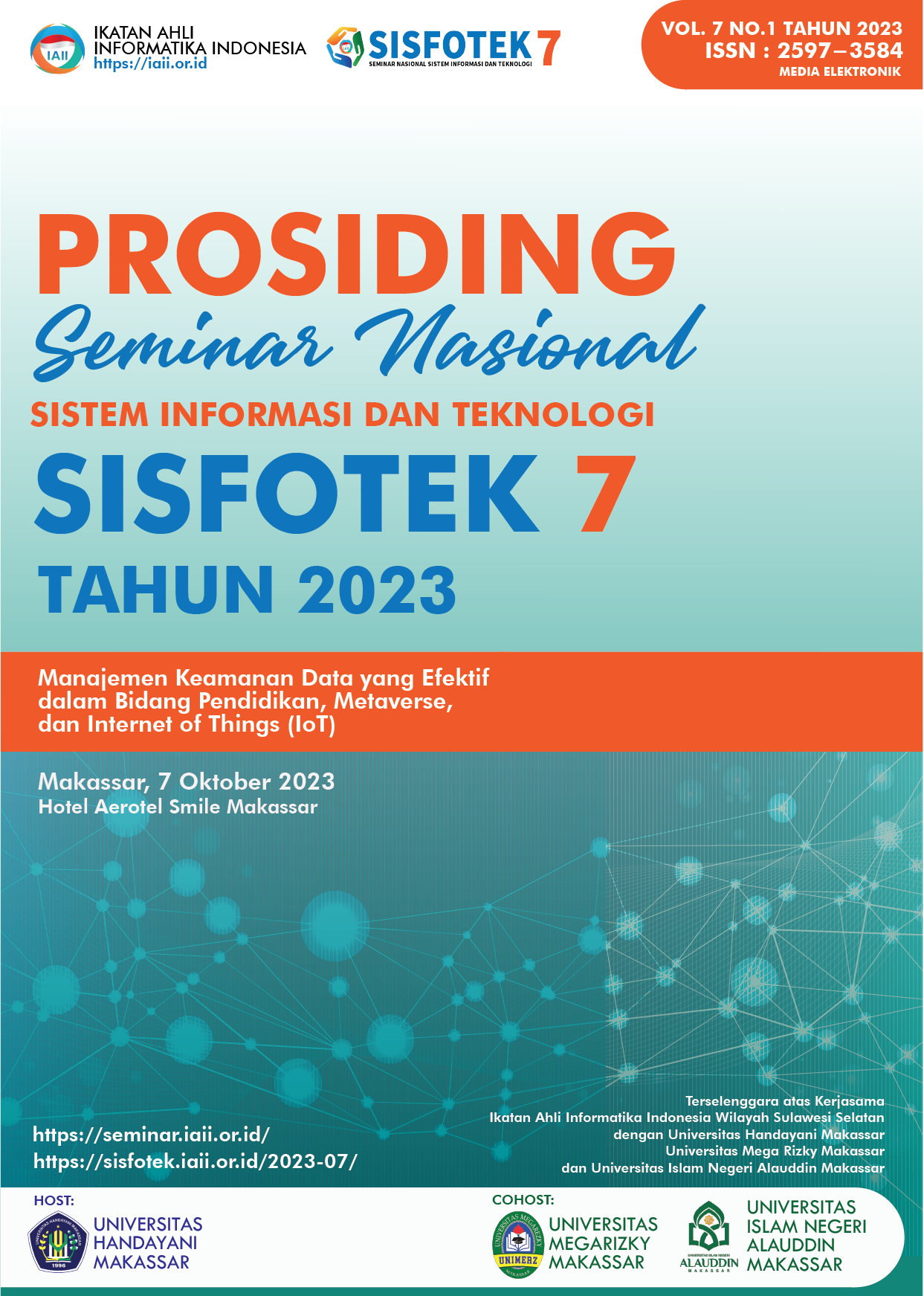Analisis Data Kementrian Agama Kota Bitung Menggunakan Metode Data Science
Keywords:
data science, clustering, forecasting, k-means, arima, ministry of religionAbstract
The Ministry of Religion (Kemenag) of the Republic of Indonesia was born on January 3 1946, the Ministry of Religion is the ministry tasked with assisting the government in the field of religion. In this research, researchers will predict the number of people for each religion in the next two years using data on the number of people from several years ago using the ARIMA Time Series forecasting method using the EView 12 application and researchers will also group places of worship based on sub-district religions using Clutering. K-Means uses the RapidMiner application to see the number of places of worship for each religion in each sub-district. The aim of this research is to help the Ministry of Religion of Bitung City in creating a dashboard to display data information and data reports about the number of people in each religion, predicting the number of people in the next two years, grouping places of worship for each religion, and the number of places of worship for each religion in the city of Bitung. The results obtained from the prediction of the number of Catholics in the city of Bitung in 2023 will be 5,563 people and in 2024 there will be 5,301 people, the predicted number of people from the Islamic religion in 2023 will be 32,768 people and in 2024 there will be 29,988 people, and the results are obtained from the prediction of the number of people from the christianity in the city of Bitung in 2023 there will be 113,242 people and in 2024 there will be 134,433 people. This produces 3 cluster models containing cluster 0 4 items, cluster 1 3 items, and cluster 2 1 items. The cluster starts from the number 0 because when discussing programming the number 0 is the first number in the numbering sequence
References
K. N. Fauziah, Sudianto, and S. D. Nabella, “Pengaruh Kelengkapan Data, Ketelitian, Kecepatan Dan Ketepatan Waktu Terhadap Kepuasan Konsumen Pada Pt Federal International Finance (Fif) Cabang Batam,” Postgrad. Manag. J., vol. 2, no. 1, pp. 40–51, 2022.
F. Handayani, “Aplikasi Aplikasi Data Mining Menggunakan Algoritma K-Means Clustering untuk Mengelompokan Mahasiswa Berdasarkan Gaya Belajar,” J. Teknol. dan Inf., vol. 12, no. 1, pp. 46–63, 2022, doi: 10.34010/jati.v12i1.6733.
J. Sari, A. Dharmalau, and R. Syahrial, “Rancang Bangun Sistem Informasi Pendataan Laporan Skripsi Dengan Analisa Metode Swot,” Jris J. Rekayasa Inf. Swadharma, vol. 2, no. 1, pp. 32–40, 2022, doi: 10.56486/jris.vol2no1.152.
V.A.R.Barao, R.C.Coata, J.A.Shibli, M.Bertolini, and J.G.S.Souza, “No ????????????????????? ?????????????????Title,” Braz Dent J., vol. 33, no. 1, pp. 1–12, 2022.
R. E. Simanjuntak and A. W. Purnawan, “Forecasting Bahan Baku Raw Sugar Dengan Metode Time Series & Usulan Perencanaan Safety Stock Pt Medan Sugar Industry,” Ind. Eng. Online J., vol. 11, no. 4, 2022.
Nabilah Febriyanti, Ari Setyo Wati, and Mayrilin Kayla Dedyanti, “Analisis Time Series Dan Cross Section Perbandingan Kinerja Keuangan Pada Pt Kimia Farma Tbk, Pt Pyridam Farma Tbk, Dan Pt Kalbe Farma Tbk Tahun 2019-2021,” Inisiat. J. Ekon. Akunt. dan Manaj., vol. 2, no. 1, pp. 184–203, 2022, doi: 10.30640/inisiatif.v2i1.476.
F. Fejriani, M. Hendrawansyah, L. Muharni, S. F. Handayani, and Syaharuddin, “Forecasting Peningkatan Jumlah Penduduk Berdasarkan Jenis Kelamin menggunakan Metode Arima,” J. Kajian, Penelit. dan Pengemb. Pendidik., vol. 8, no. 1 April, pp. 27–36, 2020, [Online]. Available: http://journal.ummat.ac.id/index.php/geography/article/view/2261/pdf
M. R. Nahjan, N. Heryana, and A. Voutama, “Implementasi Rapidminer Dengan Metode Clustering K-Means Untuk Analisa Penjualan Pada Toko Oj Cell,” J. Mhs. Tek. Inform., vol. 7, no. 1, pp. 1–4, 2023.
Downloads
Published
How to Cite
Issue
Section
License
Copyright (c) 2023 Seminar Nasional Sistem Informasi dan Teknologi (SISFOTEK)

This work is licensed under a Creative Commons Attribution 4.0 International License.
http://creativecommons.org/licenses/by/4.0







